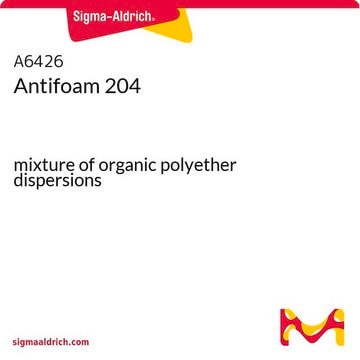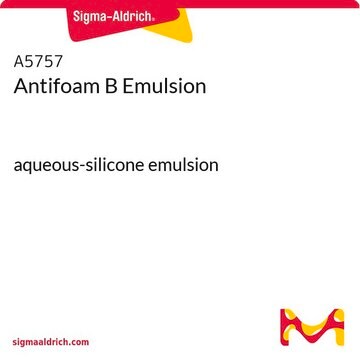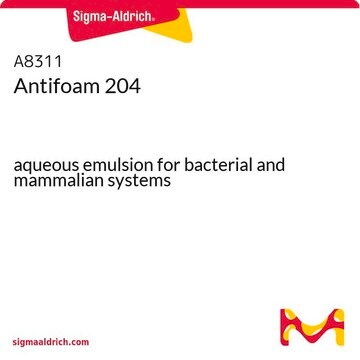A8011
Antifoam C Emulsion
aqueous-silicone emulsion
Synonym(s):
Antifoaming Agent Emulsion
About This Item
Recommended Products
biological source
synthetic
Quality Level
form
emulsion
contains
emulsifier
technique(s)
cell culture | hybridoma: suitable
microbiological culture: suitable
mp
0 °C (32 °F)
Related Categories
General description
Application
- as a supplement in RO-H2O and a chemically defined culture medium to determine volumetric mass transfer coefficient (kLa) of mammalian cell culture
- as a component of feed medium,
- as a steam-sterilized antifoaming agent in a biocontroller for pH-stat fed-batch cultivations
- as a supplement in fed batch medium to mimic the typical large-scale cultivation conditions
Features and Benefits
- Minimizes compatibility issues with biological systems
- Highly effective defoamer at low concentrations
- Highly effective and versatile silicone defoamer
Other Notes
signalword
Warning
hcodes
Hazard Classifications
Eye Irrit. 2 - STOT SE 3
target_organs
Respiratory system
Storage Class
10 - Combustible liquids
wgk_germany
WGK 3
flash_point_f
Not applicable
flash_point_c
Not applicable
ppe
Eyeshields, Gloves, type ABEK (EN14387) respirator filter
Choose from one of the most recent versions:
Certificates of Analysis (COA)
Don't see the Right Version?
If you require a particular version, you can look up a specific certificate by the Lot or Batch number.
Already Own This Product?
Find documentation for the products that you have recently purchased in the Document Library.
Customers Also Viewed
Our team of scientists has experience in all areas of research including Life Science, Material Science, Chemical Synthesis, Chromatography, Analytical and many others.
Contact Technical Service













